How Are Diamonds Made? Natural vs Lab-Created Explained
Two Paths, One Diamond Not all diamonds come from the same place — but they all start the same way. Pure carbon, crystalized under immense pressure and heat. Whether it…
Many diamond websites claim that simple at-home tests will tell you if a diamond is fake or real.
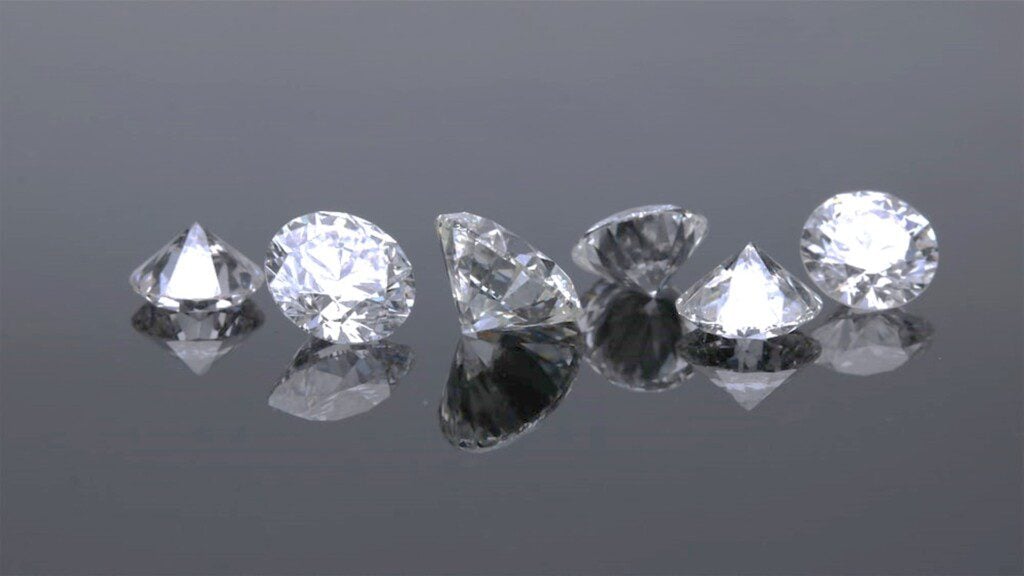
They often start like this: There are a variety of different ways to tell if your diamond is real or fake. At-home tests are an excellent way of gaining information…
The truth is that no at-home tests are conclusive tests. The best way to know if a diamond is real or fake is to send it to a top-tier laboratory such as GIA, AGS, IGI, GCAL, etc.
Search real diamonds: See prices and information on 1,000,000+ real diamonds, accompanied by laboratory grading reports, in the PriceScope Search Engine.
You can also take a diamond to a local trusted jeweler that should be able to use a tester. Something to keep in mind is that the diamond should be loose – meaning it’s removed from any setting, like a ring or stud-holder.
Wondering whether natural or lab-grown diamonds are best for you? Our elite list of vetted vendors like Whiteflash and James Allen are experts at listening and helping you determine which type of diamond is best for you - and nicely in budget. Contact Us and get help today.
No. Lab-grown diamonds are real diamonds. They are not simulants like CZ or moissanite, which you can test for with the methods below. Lab-grown diamonds will pass every test as real diamonds. Read more on our education page covering Lab-Grown Diamonds.
Is my diamond fake or real? Many people want quick and easy ways to answer this question. Some methods pass. Others fail. Below are some of the tests suggested, and what we think about them.
The basis behind this test is that a real diamond is incredibly dense, so this test will allow you to assess the density of your gemstone from your home. Fill a tumbler up ¾ full with water and a drop the loose stone in. If it floats, it is a fake – if it sinks then you are back to step one.
| TRUTH: This is not a great test as most diamond imitations will sink, just like a diamond will. |
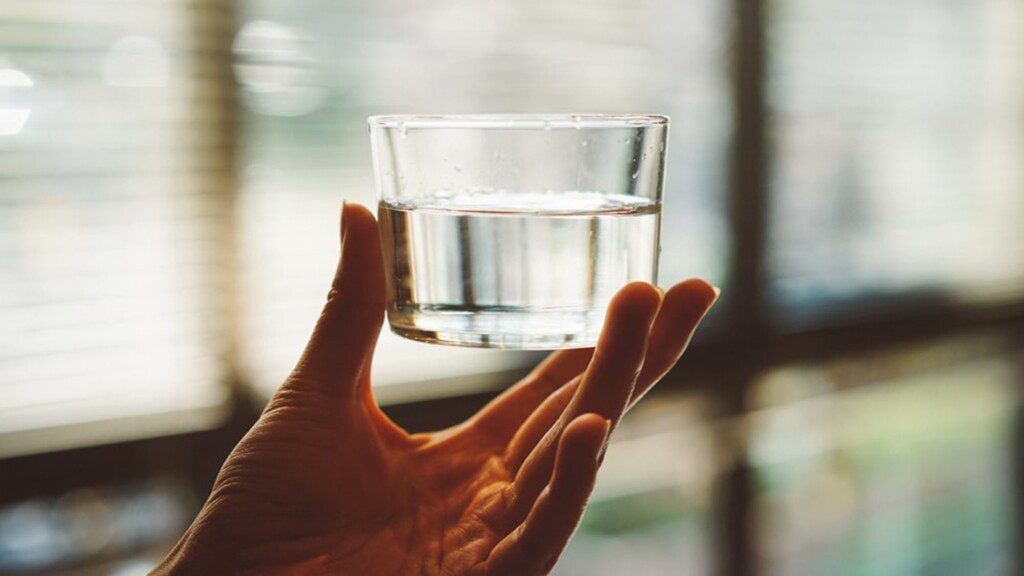
This test sounds scary but, if the diamond is real, you have nothing to fear.* To begin, fill a glass with cold water and put on a pair of fireproof gloves. Heat the stone for around 30-40 seconds then immediately submerge it in the cold water. A real diamond will show no reaction; a fake is likely to shatter. This rapid expansion and contraction of heat will cause weak materials like cubic zirconia to crack and shatter. A diamond is resistant to heat tests as the heat quickly disperses, leaving it unaffected by the drastic changes in temperature. Be sure to carry out this test as safe as possible.
| TRUTH: Dangerous and not recommended. Heating a diamond in the air with an open flame most likely will cause the outside surface to become milky and cloudy. If it is not a diamond then that gem will likely be destroyed. |
This is a less extreme test of the stone’s abilities to conduct heat. To carry out the fog test, hold the diamond between two fingers so that it can be clearly seen, and breathe on it. If the fog immediately dissipates, it is likely that the stone is a real diamond. If the fog remains for several seconds, it means that the stone is not effectively conducting heat and is a fake.
TRUTH: This only works for unset diamonds. Since most diamonds people own are set it will not work. But if you found what looks like a diamond, and you can get a similarly sized loose CZ (or glass gem), you can place them both on a piece of paper and breath on them. If the fog dissipates at the same pace as your CZ or glass stone they are both fakes. Take caution as some fakes, such as moissanite, may have similar dissipation times. |
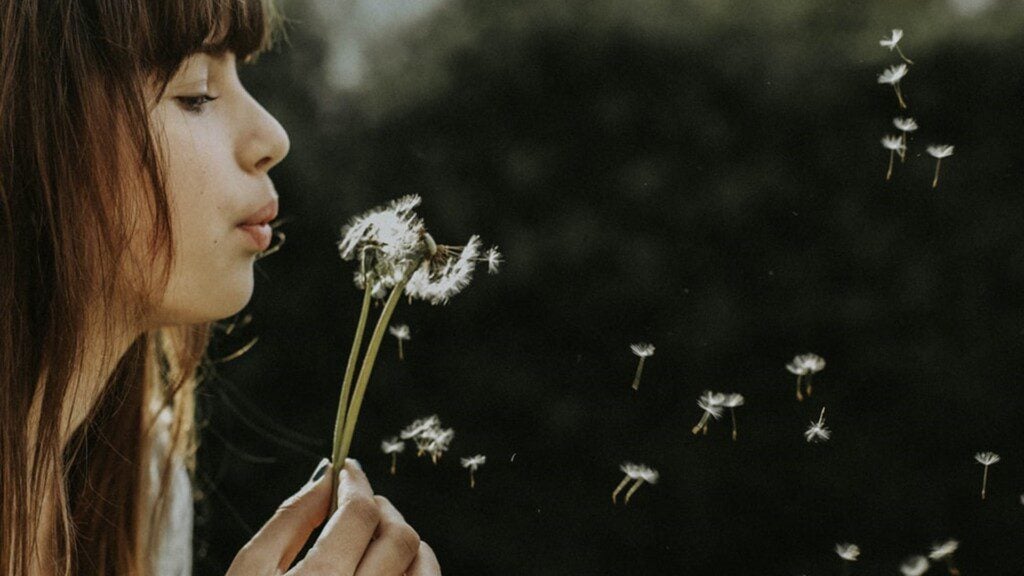
If you have been researching certification and diamond quality, you may have heard the term fluorescence. This describes the phenomena of a diamond emitting a blue glow when viewed under UV light. This glow can range from faint to very strong. However, not all diamonds possess this quality, so an absence of this blue glow does not necessarily indicate that the diamond is a fake. It’s a fun test, but not the most conclusive.
TRUTH: This will work for about a quarter to a third of diamonds because most that do will fluoresce blue. Diamonds can fluoresce with other colors, but +90% of those that do go blue. The UV light used at nail salons as a hardener works well. Remember this is not a conclusive test. |
The newspaper test, or read-through test, is one of the ways you can test refractivity (a diamond’s ability to bounce, bend and refract light). Place the stone upside down onto a newspaper over the lettering in a well-lighted area. Be sure that there are no shadows being cast over the stone or the newspaper. If you are able to read the letters (even if there is a slight blur) the stone is fake. A real diamond will refract the light in multiple directions from its various facets. This refraction will prevent you from being able to see clearly through the diamond to read the lettering.
| TRUTH: This only works for unset, well-cut modern round diamonds. Take caution as it will not help with moissanite. |
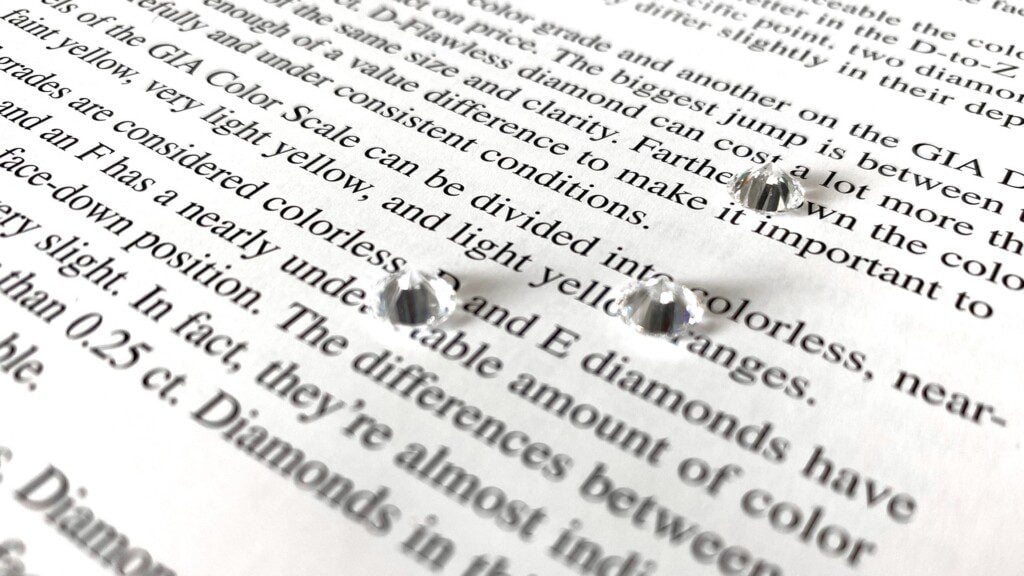
The dot test also examines the refractive properties of a stone. Draw a small dot on a piece of white paper with a pen. Lay the stone flat side down over the dot and ensure the area is well lit with no shadowing. Through the pointed end of the diamond, look down at the paper. If you can see the dot reflected inside the gemstone and it is circular, the diamond is fake. If you cannot see the dot or a circular reflection, it is likely that the diamond is real. Like the newspaper test, the powerful refractive properties of a natural diamond will allow the light to bounce in different directions, and this is why you will not see the dot through the diamond.
| TRUTH: This only works for unset, well-cut modern round diamonds. Take caution as it will not help with moissanite. |
The sparkle test is a ‘by eye’ form of testing your diamond. This is pitched as a great way to gain a better understanding of the optical properties of a diamond, as well as help to indicate whether or not the diamond is a genuine, natural diamond. (A lab-grown diamond will be the same as a mined diamond).
Hold the diamond beneath a light source, such as a lamp, and examine how the light reflects off of the diamond. Is there a white, blinking quality to the diamond (scintillation)? Are there also reflections of rainbow light? We covet diamonds for these properties and taking the time to examine this will give you a lot of information about the stone.
This test is best performed with a point of comparison; for example, if you have cubic zirconia that you are able to compare with the diamond, you will be able to identify the striking differences between them. This test is not foolproof. A badly cut diamond that is heavily included and has a low color grading will not give the distinctive sparkle that expects from a diamond, and so the untrained eye may find it harder to identify these optical properties. Similarly, the quality of synthetic diamonds has improved greatly over the years, meaning that a diamond novice may be deceived (we will look closer at synthetic diamonds shortly).
| TRUTH: This is not a great test. It is well known that many jewelers fail at this test, especially when comparing diamond and moissanite. Don’t rely on it. |
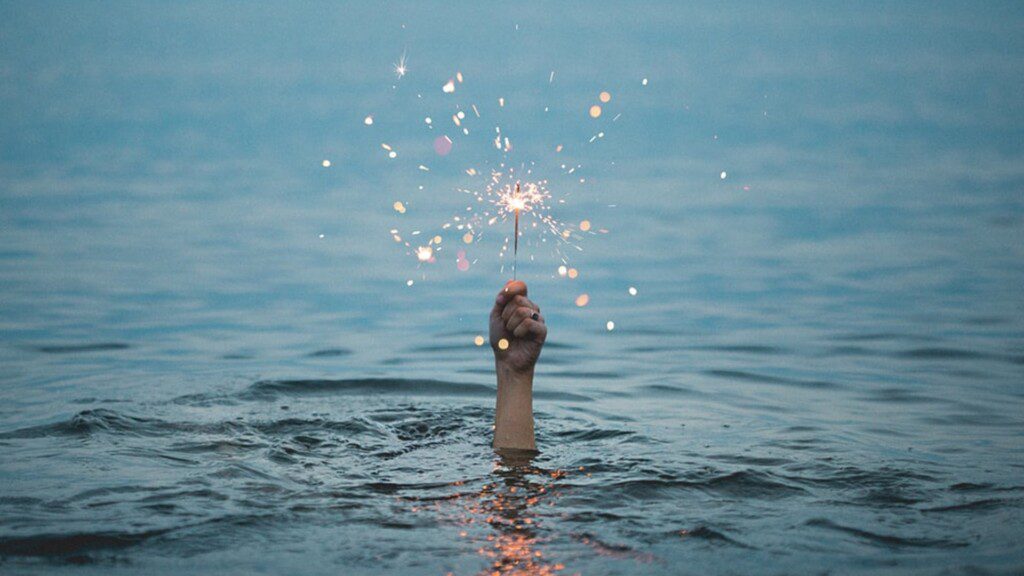
Perhaps one of the best-known myth tests to see if a diamond is genuine is to scratch it against a mirror or piece of glass. This method tests the hardness of one material against another and is based on the Mohs scale (the scale upon which minerals are graded in terms of hardness). Unfortunately, this test is not accurate. Glass measures at 5.5 on the Mohs scale. That means that anything with a higher score can scratch it: materials such as quartz, moissanite, and cubic zirconia all rank higher than glass, meaning that they too would leave a scratch.
It is also known or been said that you can use a known diamond to destroy any fake except a synthetic diamond. But if you do that you also take the risk of scratching a real diamond with a real diamond.
| TRUTH: Not recommended. You wouldn’t want to scratch the real thing. |
Some sources claim a flashlight can be used to separate a real diamond from fakes. To tell if a diamond is real with a flashlight, hold the flashlight vertically with the beam shooting up, and place the stone upside down on the lens. Examine how the light from the flashlight passes through and exits the stone. Do you see white light only, or do you see rainbow colors on the surface where the flashlight beam exits the stone? Diamond’s refractive index is high, so white light entering diamond material is separated into component colors prior to exit. For this method, it’s best to use a comparison stone such as CZ or glass which you know is fake. You can tell if a diamond is real with a flashlight when the diamond is observed to successfully separate light into spectral colors, whereas the fake comparison stone does not.
| TRUTH: Don’t use this test as it’s unreliable. Much like the sparkle test, it will not separate diamond from moissanite, and even professionals can’t use it reliably. |
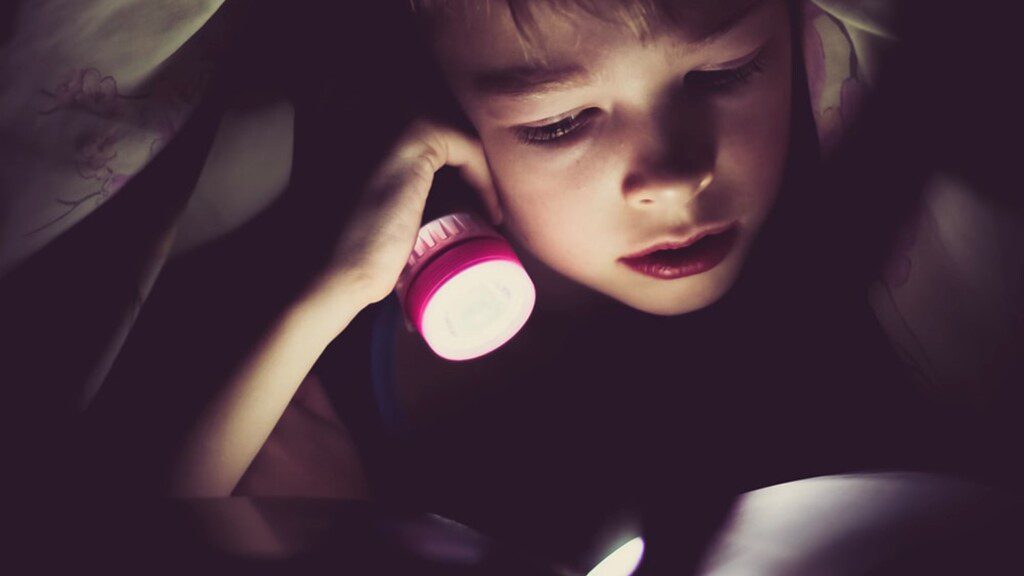
Most jewelers will have access to a jeweler’s loupe; this is a small but powerful magnifying glass that is used to examine metal (hallmarks, solder marks, etc.) and of course, diamonds and gemstones. A jeweler will be looking for any of the naturally forming inclusions that make diamonds unique. However, there is always the possibility that the diamond is real, but has an IF (internally flawless) or FL (flawless) grading. These diamonds are extremely rare so this would be an excellent outcome for your testing!
If the diamond has been graded by a top-tier laboratory such as GIA, AGS, IGI, or GCAL you should be able to see a lab report # on the girdle. You will probably need a 20X loop for this. Once you have the report #, it can be looked up and compared to the diamond specs.
| TRUTH: Not recommended. Most people cannot see VVS to VS1 inclusions, even with a loupe, and most loupes at a jewelers’ counter are low magnification and not of great quality. |
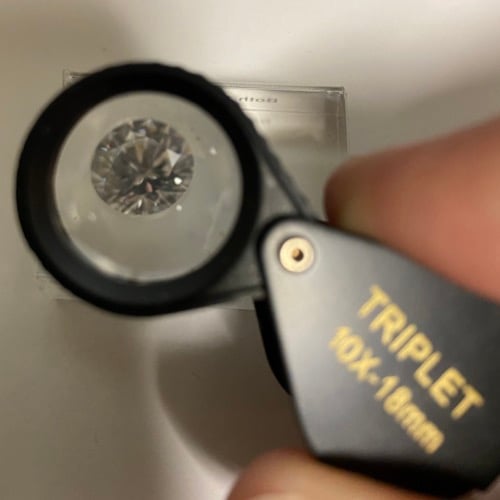
PriceScope’s 1-5 star ratings are categorical comparisons with the most thorough, consumer-focused online diamond and jewelry vendors, in categories, we believe reflect our experienced consumer community’s values. Check out PriceScope Jeweler Reviews.
If at-home tests are just a guideline, what can you do to get a definitive answer about whether or not your diamond is real? The best way is to ask an expert.
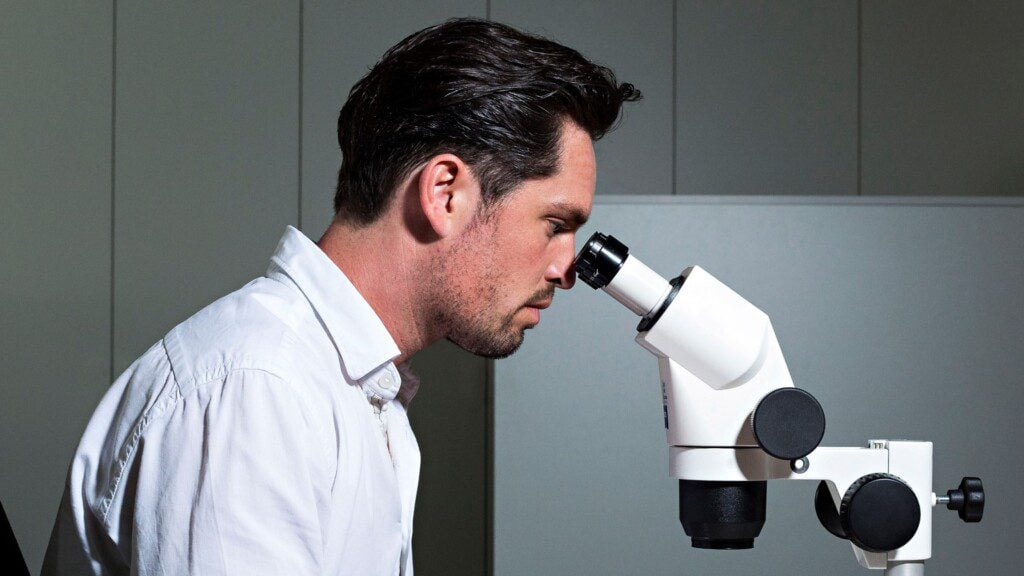
Local jewelers may have in-house gem specialists, but tread cautiously. Often, jewelry store staff will sometimes have limited specialist knowledge when it comes to diamonds, and very few are professional gemmologists. Do your research, and visit someone with the correct qualifications who can give you answers to all your diamond questions. PriceScope maintains a list of appraisers across the USA who may be contacted for this purpose.
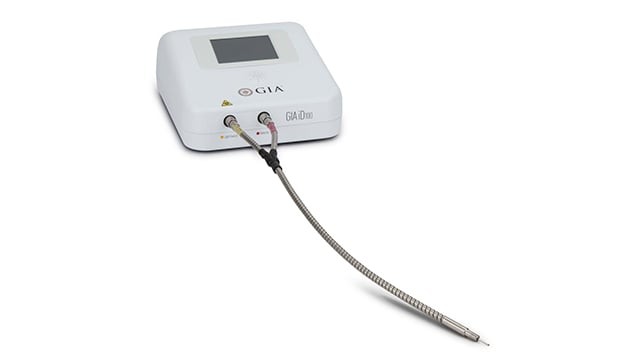
A diamond tester (also known as a thermal conductivity probe) is used to measure the thermal conductivity of the gemstone. Diamonds are highly effective heat conductors and will disperse heat rapidly after being warmed (as seen in the heat test). If the gemstone disperses heat at a slower rate, it is not a genuine diamond. However, it is important to be aware that moissanite stones (diamond simulants) have a very similar ability to disperse heat, meaning that this test may not be conclusive for a moissanite/diamond test.
To use the probes, the thin metal rod is pressed against the surface of the gemstone. Usually, a light gauge on the side will give you your reading. Diamond testers are quite straightforward to use and can be purchased online.
An electric conductivity test can also be performed if your local diamond expert carries the correct tool. This form of testing is more effective than a thermal test, as it can also rule out moissanite, which does not conduct electricity with the same efficacy as a diamond.
Make sure that the person using the tester know how they work as the testers are known to give false positives. The diamond must be set or in contact with some metal.
If you’re looking to buy loose diamonds online, use our special tools to reveal the best cut quality diamonds! Start your diamond search and choose from over a million loose diamonds for sale. Use our filters to find either natural or lab diamonds, as well as fancy color diamonds.
The term ‘fake diamond’ can really be applied to anything that you have been given or sold that is claiming to be a (natural) diamond when it is not. In truth, these simulants and gemstones that are often mistaken for diamonds have unique properties all of their own.
Moissanite can be quite beautiful, and man-made lab-grown diamonds are real diamonds that, in the right circumstances, are perfectly appropriate for jewelry.
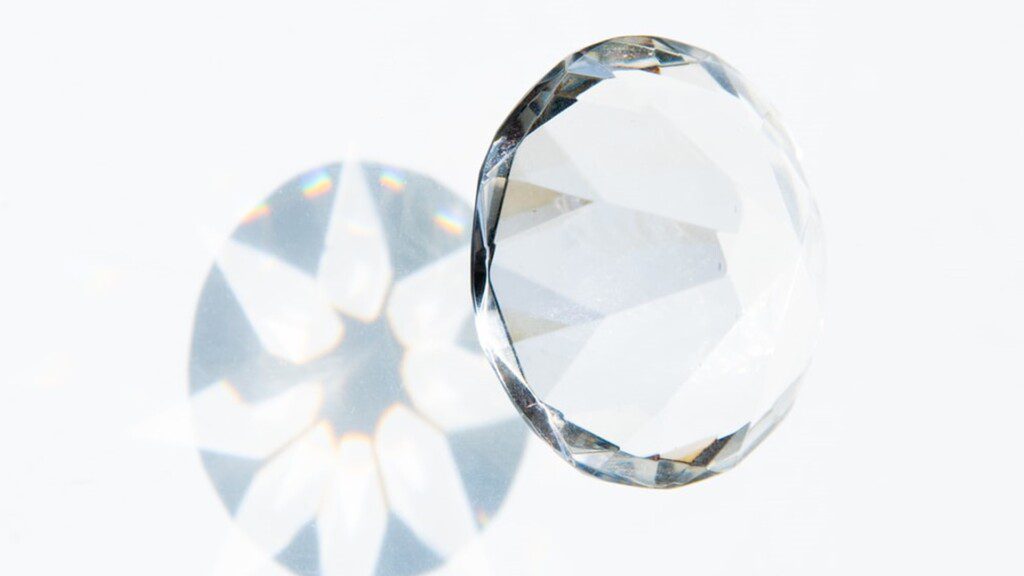
Here are some of the most common materials used to imitate diamonds.
Moissanite is a naturally occurring substance but, due to its rarity, it is now made synthetically. A natural faceted clear colorless moissanite is extremely uncommon. Unlike diamonds, which are formed naturally within the earth as a result of immense heat and pressure, moissanites are lab-grown simulants that have a very similar covalent bonding structure to diamonds. This means that the gemstone gives a very similar appearance and possesses similar properties to a diamond.
Moissanite is by far the hardest material to distinguish from a genuine diamond, however, there are tests which will give conclusive results. Man-made synthetic diamonds are harder and not much more expensive.
Working on the same principle as a loupe, an expert with a microscope will be able to take an even closer looking at the structure and form of your stone to determine whether or not it displays the unique characteristics that natural diamonds have. Even a tiny inclusion that is invisible to the naked eye or through a jeweler’s loupe can be seen under a microscope.
It is very easy for a Gemologist to identify moissanite. Moissanite is doubly refractive, so when you examine it with a jeweler’s loupe through a crown facet you see the culet twice. Diamond is singly refractive. There are also heat transmission testers, but personally, they give too many false positives through misuse.
If you know the dimensions and weights of moissanite or CZ then compare them to estimated diamond weights. For round diamonds x average diameter x depth x .00625. So a 1ct diamond might measure 6.4 x3.9mm. A 6.4mm moissanite will weigh close to 0.91ct and a 6.4mm CZ will weigh in at about 1.65ct.
If you know what you are looking for, you should be able to tell the difference between a diamond and cubic zirconia simply by eye. Using the sparkle test, you will see that cubic zirconia gives nowhere near the same sparkle as a diamond. It is also likely that you will see a slight orange light (nonsense) reflected by cubic zirconia as opposed to the brilliant white sparkle of a diamond. A CZ that has been worn and is dirty will look as if there is some milky water inside the stone. With a jeweler’s loupe, the edge or girdle will be polished and curved. Older diamonds have an unpolished surface and these days almost all diamonds have 30 to 60 very small polished flat facets.
A white sapphire does not give the same sparkle as a diamond. There is also an absence of black/white balance in a white sapphire which diminishes scintillation (the blinking effect you see in a diamond) and results in a blurry appearance. Colored sapphires are a great way to enhance diamond jewelry, but white sapphires look like blurry, low-quality diamonds.
If you can not tell these gems from a diamond then you need to see an optician, or you have never ever seen a nice diamond! But immerse the gem in water with a diamond (they can be set or unset) and the diamond will only lose a little of its sparkle. White sapphire, topaz, and other low refractive index gems almost disappear in water.
White topaz is much softer than a diamond, which means it can be easily scratched by other materials. You may notice scratches across the surface of a white topaz due to its softness.
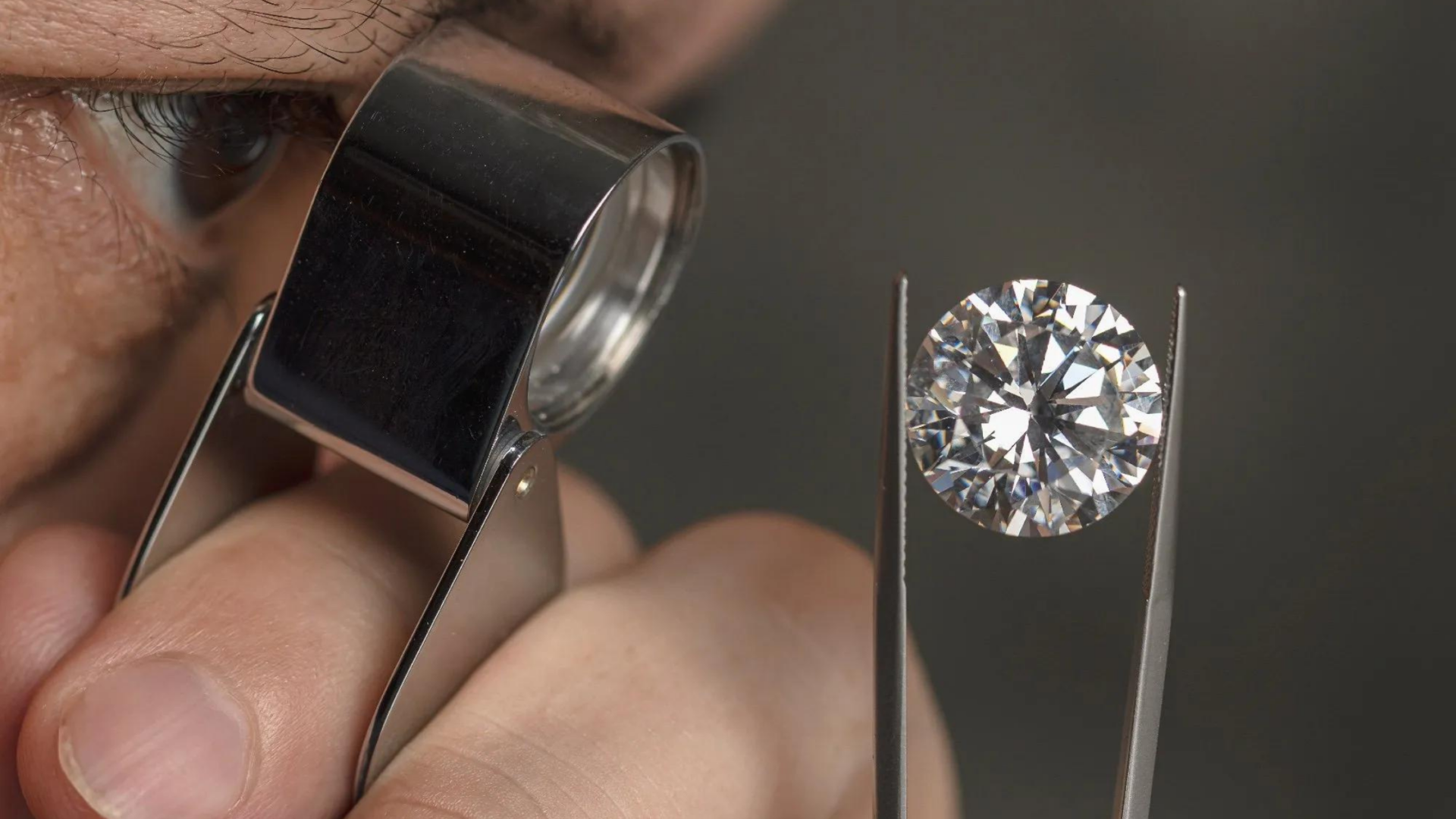
The problem with a fake diamond is that it does not possess the same durability as a genuine diamond. This means that over time, other clear stones will deteriorate, chip and scratch. This is just one of the reasons why diamonds are considered so precious. The very name ‘diamond’ comes from the Latin ‘Adamas’ or invincible.
They also look completely different from genuine diamonds. They don’t have the same impressive sparkle and will have a dull or cloudy appearance.
Other materials also do not have the same reliable grading structures in place that a genuine diamond will have. A report from a top-tier diamond grading laboratory assures you of the quality of your diamond, as well as outlining the individual characteristics of your stone. It is this individuality that is a constant reminder of the almost miraculous conditions that must occur in order to create a natural diamond. As unique as a snowflake, your natural diamond is one of a kind, and a certification from an internationally recognized gem laboratory will document these characteristics for you, increasing the value of your diamond and giving you complete accuracy when it comes to the quality.
There are a number of ways you can test your questionable stone at home, and these methods may be able to give you some indicators of the authenticity of your diamond. However, we recommend always getting a second opinion from your local diamond expert who will have access to the specific tools and equipment to give a detailed analysis of the stone. Remember these tests are not always conclusive and mostly will only tell you if the fake is possibly glass or CZ.
To avoid future confusion, always buy GIA, AGS, IGI or GCAL certified stones from reputable dealers. This will eliminate all possibilities of fake diamonds.
Remember that shopping through lesser-known channels is a high risk, and will ultimately lead to a big financial loss and a huge disappointment. If a deal on a diamond seems too good to be true, it is. More importantly, a reputable lab will identify if a diamond is natural and not treated or synthetic factory grown. Hopefully, your diamond is real.

Retail Diamond Prices Chart Updated Monthly.

Two Paths, One Diamond Not all diamonds come from the same place — but they all start the same way. Pure carbon, crystalized under immense pressure and heat. Whether it…
A Wedding Ring as Unique as Your Love Finding the right wedding ring isn’t just about diamonds or gold – it’s about finding the one that feels right. With hundreds…
So, you’re thinking about lab-grown diamonds? Smart move. They’re just as sparkly as the natural kind but usually cost less. But where do you actually go to buy them? It…

Want to stay updated on the most recent blogs, forum posts, and educational articles? Sign up for Bling News, PriceScope’s weekly newsletter.